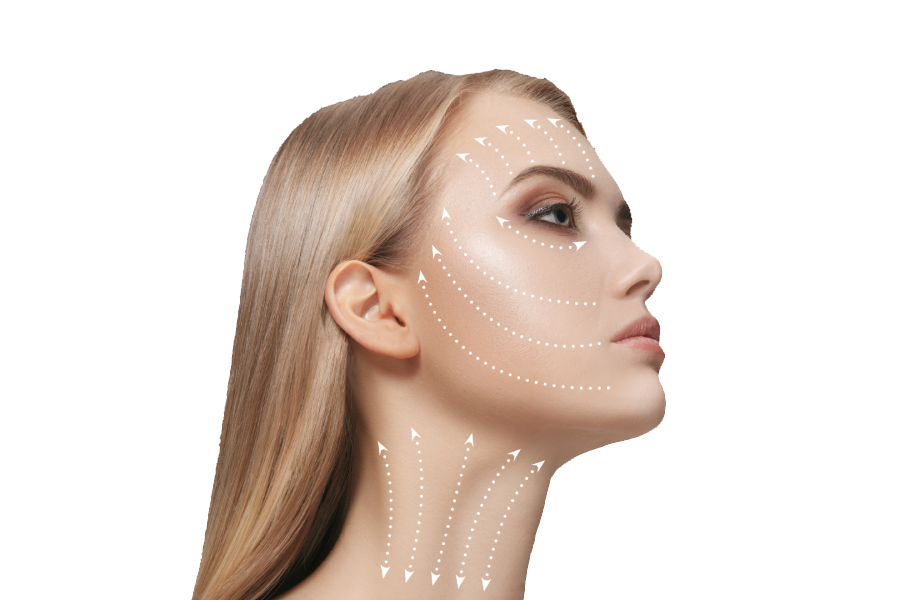
What is a facelift?
A facelift, also known as rhytidectomy, is a surgical procedure aimed at rejuvenating the face by reducing visible signs of aging, such as sagging skin, wrinkles, and facial folds. It involves lifting and tightening the skin and underlying tissues of the face and neck to create a smoother, more youthful appearance.
There are various techniques and approaches to facelift surgery, depending on the specific concerns of the patient and the extent of correction needed. Some common aspects of a facelift procedure include:
1. Incision Placement: The surgeon typically makes incisions in inconspicuous locations, such as along the hairline, around the ear, and possibly extending into the natural creases of the face. These incisions allow the surgeon to access the underlying tissues and muscles.
2. Tissue Repositioning: After making the incisions, the surgeon lifts and repositions the skin and underlying tissues of the face and neck. This may involve tightening the facial muscles and removing excess fat deposits to create a smoother, more contoured appearance.
3. Skin Redraping: Once the underlying tissues have been repositioned, the surgeon carefully redrapes the skin over the new contours of the face and neck, trimming any excess skin as needed.
4. Closure: The incisions are then closed with sutures or surgical staples. Depending on the technique used, some surgeons may also use tissue glue or other methods to facilitate healing and minimize scarring.
Facelift surgery is often performed under general anaesthesia or local anaesthesia with sedation, depending on the specific needs of the patient and the extent of the procedure. Recovery time can vary, but most individuals can expect some swelling, bruising, and discomfort following surgery, which typically subsides within a few weeks. Patients are usually advised to avoid strenuous activities and to follow post-operative care instructions provided by their surgeon to optimize healing and achieve the best possible results.
It’s important to note that while a facelift can produce significant improvements in facial appearance, it does not stop the aging process entirely. Over time, natural aging and environmental factors may continue to affect the appearance of the face. However, many individuals find that the results of a facelift can provide long-lasting rejuvenation and a refreshed, more youthful look. As with any surgical procedure, it’s essential to consult with a qualified and experienced plastic surgeon to determine if a facelift is the right option for your goals and expectations.
What should i know about my health before going ahead with a facelift
There are several health conditions that may increase the risks associated with facelift surgery or make an individual unsuitable for the procedure. While this list is not exhaustive, some health conditions that may not be recommended for a facelift include:
1. Untreated or uncontrolled cardiovascular disease (e.g., uncontrolled hypertension, coronary artery disease, history of heart attack)
2. Untreated or uncontrolled bleeding disorders (e.g., haemophilia, von Willebrand
disease)
3. Untreated or uncontrolled diabetes mellitus
4. Active infection or illness
5. History of keloid or hypertrophic scarring
6. Autoimmune disorders (e.g., lupus, rheumatoid arthritis)
7. History of previous facial surgeries that may affect surgical outcomes or increase
risks
8. Severe obesity
9. Significant psychiatric or psychological conditions that may impact decision
making or recovery
10. Smoking or use of nicotine products (increases risk of complications and impairs
wound healing)
11. Use of certain medications that may increase surgical risks (e.g., anticoagulants,
immunosuppressants)
12. Unrealistic expectations or motivations for undergoing surgery
13. Poor overall health status that may increase surgical risks or impair healing
It’s crucial for individuals considering a facelift to undergo a thorough medical evaluation and discuss their complete medical history with a qualified plastic surgeon. The surgeon will assess the individual’s suitability for the procedure, discuss potential risks and benefits, and make personalized recommendations based on their health status and goals. Additionally, patients should follow their surgeon’s pre-operative and post-operative instructions to minimize risks and optimize outcomes.

